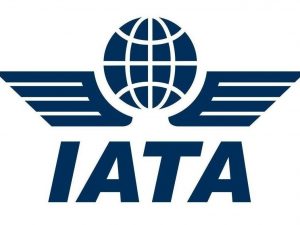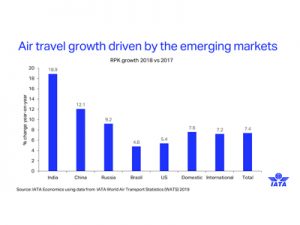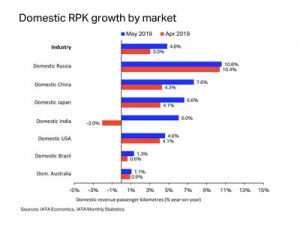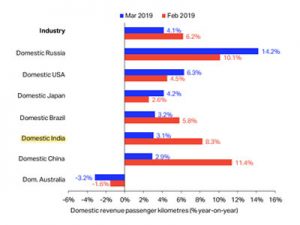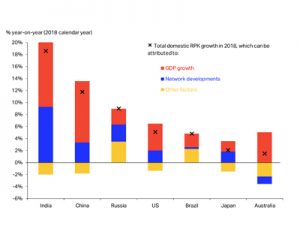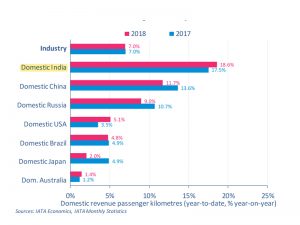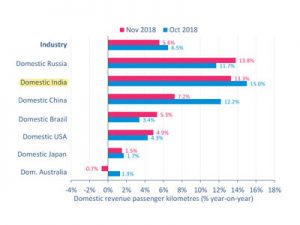The International Air Transport Association (IATA) welcomed the announcement by the European Commission (EC) granting the temporary suspension until June 2020 of the 80-20 ‘use it or lose it’ rule for airport slots. The decision reflects the unprecedented situation facing the airline industry. However, granting the suspension only until June is the very minimum the industry needs, and a decision on a full suspension until October will be needed within the next month to allow airlines to plan their schedules. The COVID-19 virus has caused a collapse in global air travel demand. Owing to the requirement to continue to operate an airport slot for at least 80% of the time, airlines have been unable to respond by adjusting their capacity. The suspension of the slot use rules until June will allow airlines to begin putting in place measures to cope with the unprecedented fall in traffic, but it is a shorter period than airlines had requested. Airlines need the suspension to be extended to cover the whole season (to October), as other regulators worldwide have already agreed. The EC will therefore need to review the extension request by April 15. “Airlines are in crisis. The collapse in demand is unprecedented. And airlines are struggling to match capacity to the fast-changing situation. The Commission’s decision to suspend slot use rules until June means that airlines can make these critical decisions immediately—without worrying about the impact on future availability of slots. This is much needed and most welcome. However, given all the uncertainties, it is disappointing that the decision does not cover the full season,” said Rafael Schvartzman, IATA’s Regional Vice President for Europe. The Commission’s decision will benefit airlines, airports and …
Read More »India records highest air travel growth in emerging markets, ahead of China
A study by International Air Transport Association (IATA) has revealed that in terms of air travel growth driven by emerging markets, India leads the pack with 18.9 per cent Revenue Passenger Kilometres (RPK) growth in 2018 as against 2017. China ranked second at 12.1 RPK, followed by Russia at 9.2 RPK.
Read More »India domestic air traffic rises again in May after April fall: IATA
The recently released global passenger traffic results for May by The International Air Transport Association (IATA), revealed that after a fall in domestic RPKs in April (down 2.0 per cent YoY), following the demise of Jet Airways, growth in the India market rebounded sharply in May, with RPKs now an even 6.0 per cent higher than a year ago. While it will take some time for the market to adjust to the recent shock, the longer-term outlook for domestic India traffic remains positive.
Read More »Domestic aviation growth dips sharply in India to 3.1% year-on-year: IATA
Year-on-year RPK growth slowed substantially in the domestic India market in March 2019, from 8.3 per cent in February, to 3.1 per cent currently, according to International Air Transport Association (IATA). Over the past five years, annual growth has averaged a double-digit pace close to 20 per cent. In large part, the slowdown reflects the disruption of flight operation for Jet Airways, including a number of flight cancellations, as well as construction works at Mumbai airport which also interrupted operations. Rising airfares in recent months are also likely to have weighed upon passenger demand.
Read More »India records over 20% growth in the number of new air routes: IATA
The growth of more than 20 per cent in the number of new routes in India provided a sizeable boost to passenger demand in the market, according to a latest report by International Air Transport Association (IATA). The surging number of international flyers is drawing airlines to new air routes in India. The increase in international air traffic from India and a focus on business and leisure travellers has prompted not only foreign airlines such as Air Italy and NokScoot to launch new routes to destinations in the country but has also got several Indian carriers including Jet Airways and IndiGo to start operations on foreign routes. Although the combination of GDP and network developments explain more than three quarters of the variation in domestic revenue passenger kilometers (RPK) growth rates over time, other factors such as tourism attractiveness, availability of travel alternatives, trade flows and demographics account for the residual growth in traffic in the country. India has become the third largest domestic aviation market in the world and is expected to overtake the UK to become the third largest air passenger market by 2025, states a report by India Brand Equity Foundation (IBEF). The report reveals that by 2036, India is estimated to have 480 million flyers, which will be more than that of Japan (just under 225 million) and Germany (just over 200 million) together.
Read More »India becomes fastest growing domestic aviation market 4th year in a row: IATA
The domestic aviation market in India has registered the fastest growth for the fourth year in a row in 2018, according to a recent report by International Air Transport Association (IATA). The year-end aviation data analysis by IATA revealed, “The India domestic market recorded the fastest full-year domestic growth rate for the fourth year in a row (18.6 per cent), followed by China (11.7 per cent).” In fact, India recorded its 50th consecutive month of double-digit annual growth in October. Other than India and China, Russia (9 per cent), USA (5.1 per cent) and Brazil (4.8 per cent) were among the top five fastest growing domestic air travel markets. According to the IATA report, globally, revenue passenger kilometers (RPKs) rose by 6.5 per cent in 2018, slower than the 8 per cent growth registered in 2017.
Read More »India records fastest domestic aviation growth of 18.6 per cent: IATA
The India domestic market posted the fastest full year domestic growth rate for the fourth year in a row (18.6 per cent), according to an International Air Transport Association (IATA) report. Domestic demand in India was underpinned by a robust economic expansion as well as by increasing number of domestic pairs. The country recorded its 50th consecutive month of double-digit annual growth in October. .“While globally, domestic air travel climbed 7 per cent last year, which remained unchanged from the rate in 2017. All markets showed annual growth, led by India and China, which both posted double-digit annual increases,” the report added.
Read More »India’s domestic passenger load factor exceeded 90% for the first time ever in February 2018
The India domestic passenger load factor exceeded 90 per cent for the first time ever in February 2018, hitting an all-time high for the other global domestic markets, namely China, the US, Brazil, Russia, Japan and Australia. According to International Air Transport Association (IATA), the bigger picture is that the current load factor performance represents a significant turnaround from the early-2000s when India regularly posted the lowest domestic passenger load factor amongst its group of countries, even dipping below 50 per cent on occasion. The evolution and maturity of India’s domestic air transport market can be illustrated by comparing the experiences around the time of 9/11 with that of late 2014. In the former, domestic capacity continued to increase even as demand slumped, while in late-2014 Indian airlines slowed capacity growth to support the load factor even as demand was growing strongly. In part, this appears to reflect the increasing influence of competitive (market) pressures over time via a mix of policy, regulatory and industry developments. Such forces have instilled a greater focus on airlines to achieve the load factor levels needed to generate adequate returns for their investors.
Read More »India now connects to more international cities through non-stop service
India has steadily increased the number of overseas city pairs served by a non-stop service from the country over time, according to a recent study by International Air Transport Association (IATA). There are 304 such international pairs in 2018, up from around 230 ten years ago. In relative terms, the India market appears to have considerably less international city pairs served than either China or Russia. However, Indian travellers have ready access (via the geographic proximity) to the Middle East superconnector hubs – Dubai, Abu Dhabi and Doha – that China and Russia do not. This increases the size of the network significantly for Indian travellers, as well as making India more accessible for international visitors. As such, it may go some way to explaining the relatively lower number of international city pairs for India relative to China and Russia.
Read More »India ranks second in domestic passenger traffic growth: IATA
The growth of India’s domestic air passenger traffic slowed in November but still managed to rise in double digits for the 51st consecutive month, according to International Air Transport Association (IATA). “India posted its 51st consecutive month of double-digit domestic RPK (revenue passenger kilometres) growth in November (13.3 per cent). This was the slowest pace in 16 months, but the bigger picture is that the strong upward trend in traffic remains in place,” IATA said in its air passenger market analysis for November 2018. According to IATA, India’s domestic air passenger volume, measured in RPK, was the second highest amongst major aviation markets like Australia, Brazil, China, Japan, Russia and the US. India’s domestic RPK in the month under review rose 13.3 per cent compared to the corresponding month of the previous year. Its domestic passenger traffic growth was second only to that of Russia at 13.8 per cent, followed by China at 7.2 per cent in the third place. “As we have argued before, strong gains in the domestic India market are being supported by structural changes, including ongoing rises in living standards, as well as large increases in the number of airport connections within the country. The latter translates into time savings and has a similar stimulatory impact on demand as reductions in fares,” IATA said. In terms of capacity, India’s domestic available seat kilometres (ASK) — which measures available passenger capacity — stood higher by 19.8 per cent in November, followed by that of Russia’s 10.9 per cent and China’s 10.2 per cent
Read More » Tourism Breaking News
Tourism Breaking News
